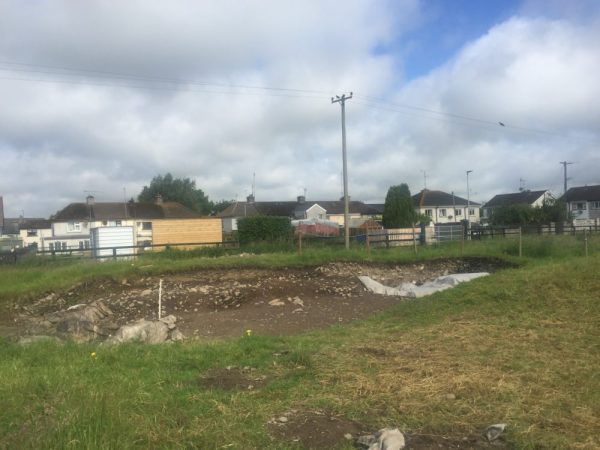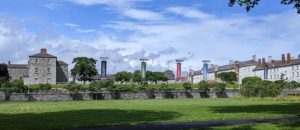The new addition to cutting 7, added north of the original area of investigation, for the sake of organization was broken down into four quadrants (A,B,C, and D). For most of the duration of the excavation season that I was on site at the Blackfriary, my time was spent in cutting 7 working on quadrants C and D. Day to day, on site, the rate of excavation is controlled by multiple factors including but not limited to: weather conditions, features being excavated, and the form of archaeological investigation (i.e. planning or digging, etc.) On the days when the weather is really bad, when it’s raining and everything turns to a soupy, muddy mess, digging tends to stop and it seems like nothing at all gets done. On the other hand, when the weather is good, we could get through up to 10 cm or more across the entire 52m2 space of cutting 7 quadrant C and D.

At the Beginning
To start, quadrant D in cutting 7, the western portion of the area investigated this summer, was covered in a thick layer of rubble mixed with soil, labeled feature F768. Further investigation of F768 in quad d eventually uncovered the start of F772, a deposit of silty-sand with inclusions of decaying slate and large/medium chunks of dry mortar, lying just beneath F768. At the beginning it seemed like F772 might just be an isolated patch. The eastern half of the area under investigation in cutting 7, or quadrant C, was a relatively flat area largely composed of a soil and rubble layer, F753 which covered the quadrant until it stopped adjacent to F768. At the northern end of quadrant C there was a possible new feature, a possible robber trench, which was at that point in time unnumbered. At the southern end of quadrant C there were a couple of larger stones, in a fairly neat/straight alignment, which was labeled F770 (possible wall).
– Kelsey Gamble, U.S.A





